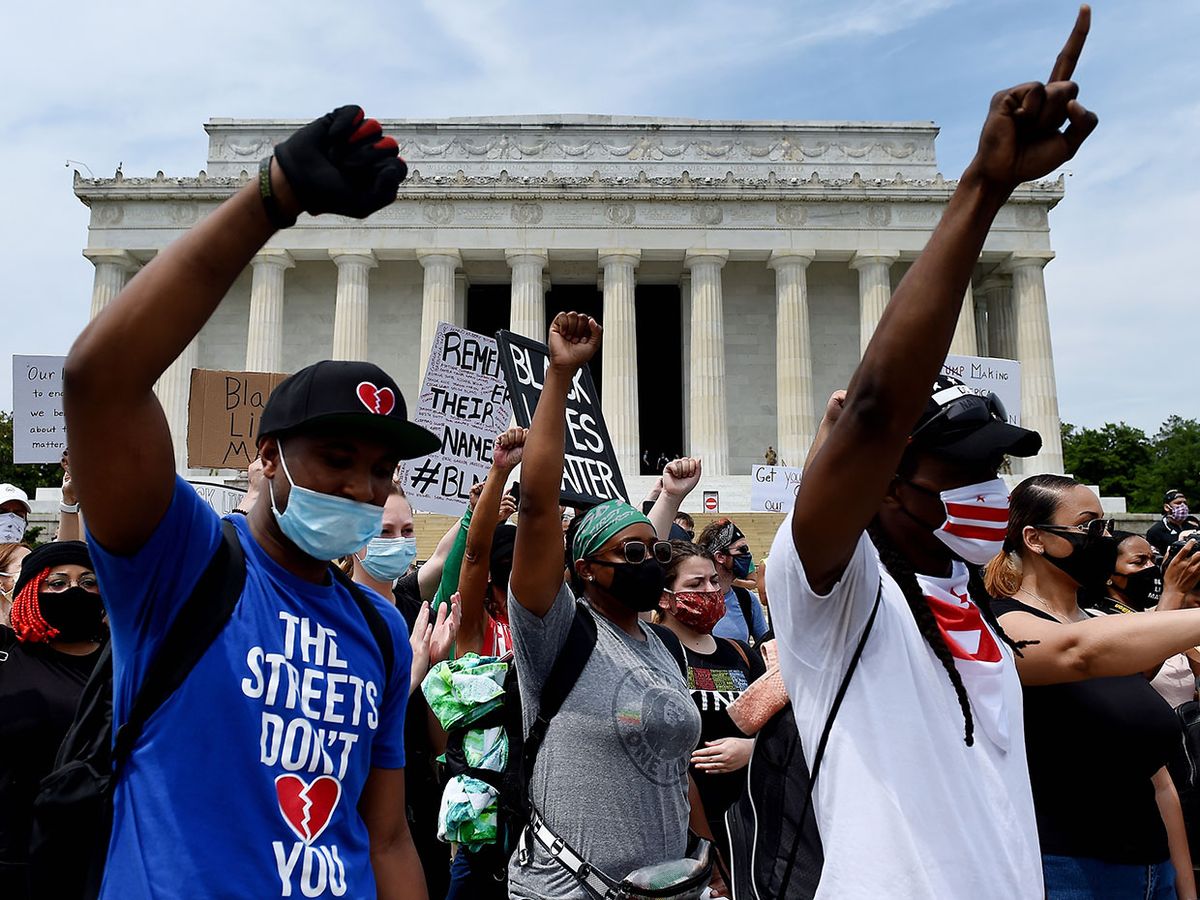As thousands of individuals continue to gather in U.S. cities to protest racial injustice, computer scientists whose models predict the spread of COVID-19 are considering how these mass gatherings might affect the rate of disease transmission.
Disease modelers use computational tools to predict the number of cases and deaths, trends in outbreaks, and the effects of social distancing measures. Scientists have been employing these tools since COVID-19 was still in China, and they involve a wide range of parameters and considerations, the newest of which is the protests.
Public demonstrations began in Minneapolis after George Floyd, a black man, was killed 25 May by Minneapolis police officers. Floyd died after having his neck pinned under the knee of a police officer for nearly nine minutes, the last two minutes of which Floyd appeared to be unconscious.
Floyd’s death prompted thousands of individuals to begin gathering daily in Minneapolis, and then in multiple cities across the United States, and later the world, to speak out against racial injustice and the abuse of police power. About 60,000 people gathered for a peaceful march in Houston last week. Washington D.C. drew somewhere between 100,000 and 200,000 people last Saturday alone.
The gatherings follow nearly three months of lockdowns and careful social distancing intended to slow the spread of the novel coronavirus, which causes the respiratory disease COVID-19. People have been avoiding their families and friends in an effort to do their part to flatten the curve.
Protests, by nature, starkly contrast with those social distancing efforts. But for many people, the need for protests outweighs the risks—the consequences of not doing something about discrimination are greater than the consequences of the pandemic. That puts disease modelers in the position of considering the amount of viral transmission the protests are likely to cause.
“Institutional racism is a public health issue. Police brutality is a public health issue,” says Joshua Weitz, a quantitative biologist at Georgia Tech, who has developed a model of COVID-19 spread in Georgia. “COVID-19 represents an ongoing threat and we must work collectively to control new transmission, yet we cannot wait to address systemic issues related to racism,” he says.

Weitz and his colleagues created an online dashboard that can estimate, based on the size of an event and its location, the chance that one or more individuals at the gathering will have the virus. Weitz says there’s a significant chance that one or more individuals at any kind of medium or large event, including protests, will have the virus.
Weitz and his team have also developed a model that projects COVID-19 infections in the state of Georgia and the impacts of social distancing. They have not added a specific protest or large-gathering component to their model because, Weitz says, they do not have the confidence to do so without more data.
Youyang Gu, a data scientist and MIT grad who uses machine learning to forecast infections and deaths from COVID-19, says he too has not altered his model to account for the protests. “Regarding the protests, we are not actively changing our model to incorporate recent events because there are still a lot of uncertainties on the effects,” Gu said in an email to IEEE Spectrum. “We are waiting for more data to come in before evaluating any potential changes or updates.”
Trevor Bedford, a researcher at the Fred Hutchinson Cancer Research Center, publicly provided his rough estimate on the impact of protests. In a series of tweets, Bedford said he expects the protests to increase the number of infections in the United States by 3 percent to 6 percent per day. At this point in the pandemic, that would likely mean adding more than 10, but less than 100, deaths per day, he estimated.
Complicating matters is the fact that the unique elements of protests—shouting, tear gas, pepper spray, and closely packed jails—will also increase transmission potential, disease modelers say. COVID-19 disproportionately affects people of color.
“These immediate health impacts need to be weighed against the potential for long-term reform,” Bedford wrote in his tweets. “Because of the pandemic, we’re in a terrible situation where addressing systemic racism and bringing [the] economy back online carry health risks.”
But there is a way to attend the protests while trying to reduce risk and disease spread. “I participated in multiple Black Lives Matter protests in Atlanta this past weekend,” says Weitz. “In doing so, I wore a mask and tried to distance whenever possible.” Outdoor protests are likely to carry relatively less risk than indoor, and individuals who attend a protest should seek COVID-19 testing afterward, he says.
Emily Waltz is a features editor at Spectrum covering power and energy. Prior to joining the staff in January 2024, Emily spent 18 years as a freelance journalist covering biotechnology, primarily for the Nature research journals and Spectrum. Her work has also appeared in Scientific American, Discover, Outside, and the New York Times. Emily has a master's degree from Columbia University Graduate School of Journalism and an undergraduate degree from Vanderbilt University. With every word she writes, Emily strives to say something true and useful. She posts on Twitter/X @EmWaltz and her portfolio can be found on her website.



